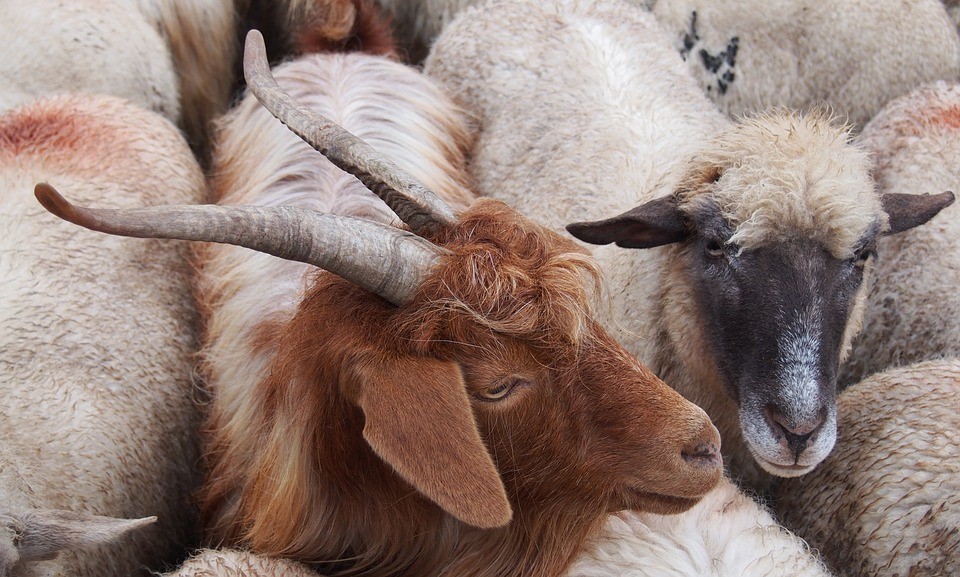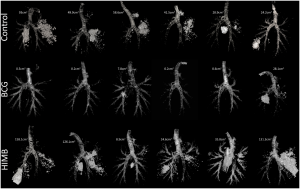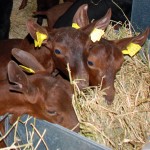Of goats, sheep and tuberculosis

Tuberculosis is one of the diseases with which we work at IRTA-CReSA. We can do this because we have a level 3 biocontainment unit that allows us to work directly and safely with the infectious agents that cause tuberculosis. Zoonoses like this, diseases that affect animals and people, are also one of the reasons that explain the existence of a research center like ours.
For years we have collaborated with the Ministry of Agriculture, Livestock, Fisheries and Food of the Generalitat de Catalunya in the tuberculosis eradication program in cattle. Every year we see new tuberculosis outbreaks appear in the herds of Catalonia, proving that it is a very difficult disease to control!
Over the years, it has become clear that this difficulty lies in the need to fight against different fronts. So, while the regulations are focused mainly on cattle, tuberculosis is much less selective, since it can be found in wildlife, for example in wild boars, and it can also be found in domestic animals such as sheep and, above all, goats. No matter how hard we try to eradicate the disease from cattle, as long as it continues to be present in wild boars or goats we will not succed!
So, one of the objectives we, IRTA-CReSA researchers, pursue is to develop and validate tools that enable us to fight against tuberculosis in these fronts. One of them is vaccination. Vaccination in cattle is prohibited because the diagnostic tests used nowadays are not yet able to distinguish if an animal is infected or has been vaccinated, and because all animals with a positive diagnostic result must be culled, we cannot vaccinate cows. But with goats and sheep the regulations are not specific in this area and, therefore, there is no such express prohibition when it comes to vaccination.
To this day, although there is a handful of vaccines in development to fight against tuberculosis, BCG is the vaccine that has mostly been used, the same vaccine that is used on people, it is in fact the only vaccine currently registered to prevent human tuberculosis. A while ago, we posted about the experiments we made in our center to test if the BCG was safe and effective in goats. Although this vaccine was not able to prevent infection, it allowed to significantly reduce the severity of the lesions thus helping to prevent the infection from spreading in the animal and, therefore, also helping to prevent the spread of the infection within the flock.
We have now taken a step further and tested the vaccine in an experiment on a farm, simulating real field conditions, a goat farm where many of them (more than 3 out of 4) were infected with tuberculosis. We took a group of goat kids and vaccinated half of them. Then we mixed them with the rest of the herd during a year and a half to check if the vaccine had the effects that we had already demonstrated experimentally and in controlled conditions. And, indeed, the results coincided. Demonstrating that the BCG vaccine is one tool to keep in mind.
These results have been published open access in the journal BMC Veterinary Research: Field evaluation of the efficacy of Mycobacterium bovis BCG vaccine against tuberculosis in goats Enric Vidal, Claudia Arrieta-Villegas, Miriam Grasa, Irene Mercader, Mariano Domingo and Bernat Pérez de Val BMC Veterinary Research 2017 13:252
And then there are the sheep. It seems, or at least it is usually said, that sheep are more resistant than goats to become infected, but it is clear that they can also contract tuberculosis. And this in flocks where cattle and sheep live together, or simply in pastures shared by both species, can be a real problem. So, in collaboration with a research center in Asturias, SERIDA, we carried out a study similar to what we had done initially in goats but in sheep to prove if the BCG was effective in this species. In addition, we introduced a new element: a new inactivated vaccine, administered orally.
One of the perks of this study is that we were able to use CT scans (computerised tomography) to determine the volume of tuberculous lesions in the lungs of the sheep in the most objective way possible to compare non-vaccinated animals with those vaccinated with BCG and with the new oraly administered vaccine, called HIMB.
Image: PLoS ONE.
The images of the CT scans of the lungs speak for themselves, in white one can see the tuberculous lesions. Animals vaccinated with BCG (middle row) have a lot less volume of lesions than the non-vaccinated controls (above) or those vaccinated with the inactivated oral vaccine (HIMB, below). The results of this experiment validate the use of BCG as a tool to control tuberculosis in sheep while reinforcing our experimental tuberculosis infection model to study future vaccine candidates in the ovine species. Unfortunately, the oral administration of the inactivated vaccine did not appear to be a viable option, it will be necessary to continue to investigate, possibly in its effectiveness with other forms of administration.
This study has also been published, in open access, in the jorunal PLoS ONE: Assessment of BCG and inactivated Mycobacterium bovis vaccines in an experimental tuberculosis infection model in sheep Ana Balseiro , Raúl Altuzarra, Enric Vidal, Xavier Moll, Yvonne Espada, Iker A. Sevilla, Mariano Domingo, Joseba M. Garrido, Ramón A. Juste, Miguel Prieto, Bernat Pérez de Val Published: July 5, 2017https://doi.org/10.1371/journal.pone.0180546
These studies have been financed by the Ministry of Agriculture, Livestock, Fisheries and Food of the Generalitat de Catalunya and by the research projects of the MINECO AGL2012-36171 and INIA RTA2014-0002-C02. The author acknowledges Dr. Bernat Pérez del Val for its critical review of the post. Cover image.














